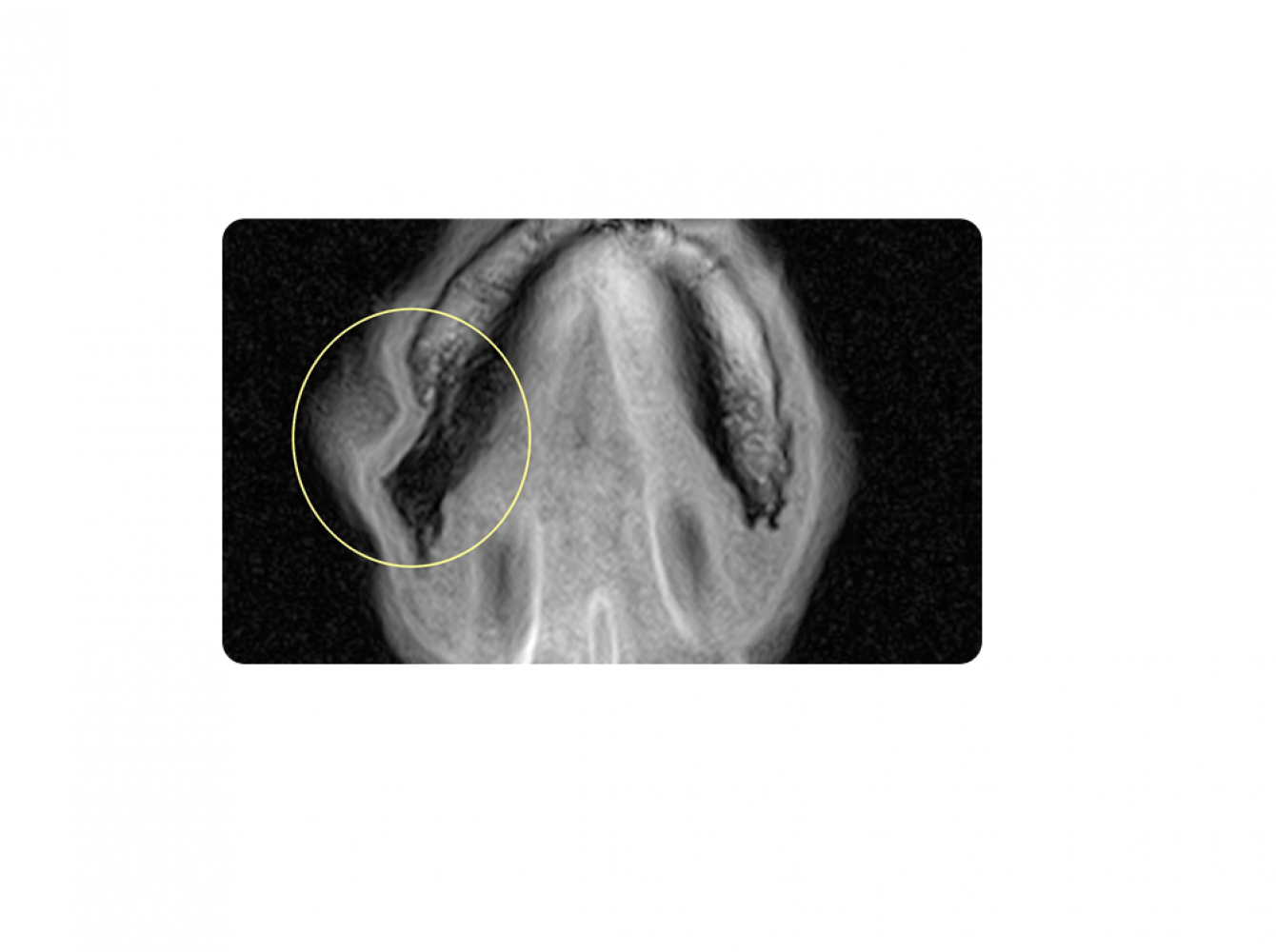
Defect in P3
How to treat a horse with a defect in P3
Patient:
6 years warmblood gelding
Anamneses/history:
1/5 degree lame RF in straight line, 2/5 degree lame both front legs in lunge. Unwilling to move forward. Very flat feet with long toe.
Hoof test neg, norm dig pulses
Blocks to a low PD
The horse had a deep foot abscess in 2016 (RF) that was surgically cleaned up due to involvement of P3, suspected P3 fracture
MRi and Radiology Findings:
Right Fore Foot:
- mild distention of the DIP joint
- mild synovitis of the DIP joint
- severe keratoma or neoplasia palmar in the lateral hoof wall and resorption of the bone structure of the pedal bone
- The most obvious lesion is a severe defect palmar in the lateral hoof wall. It does most likely represent a large keratoma that causes pressure on the lamina. There is an increased amount of fluid in this region which could represent inflammation of P3 and or the pododerma.
- Negative palmar angle (both front feet)
- Broken back hoof-pastern axes. (both)

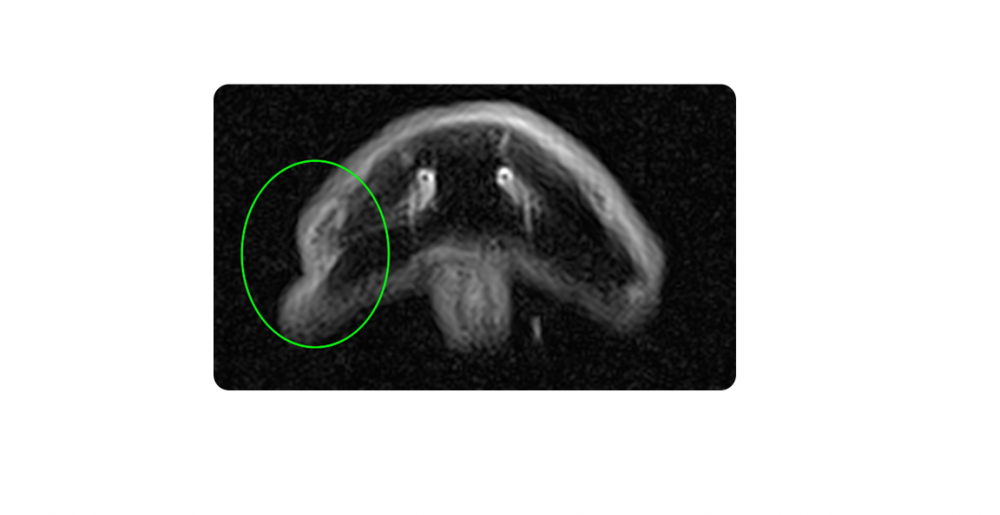
Shoeing:
There was two issues to be addressed shoeing this horse. Low palmar angles has presumably given inflammation in coffin joints on both front feet. Lateral Palmar prosess of P3 right front is defect. This can date back to horses 2.nd year and a very deep abscess with following surgery. Latest Mri indicates keratoma. Although surgery is not done at this stage.
- Corrective trim both front. Remove excess toe to rise palmar angle and realign HPA
- Floating/unloading area around lateral palmar process of p3.
- Stabilizing the foot and load shearing onto frog and sole.
- The foot was medio-laterally asymmetrical and needed to be fitted outside perimeter of the foot laterally. (extension)
- A barshoe applied to give stability and provide load shearing.
- Rocker toe to reduce leverage at breakover and reduce load in coffin joints
- Graduated leather pads applied for shock-absorbing and realignment of hoof-pastern axes and palmar angle.
- Pad cut out in lateral heel area to ensure no pressure to palmar process of P3 area
- Dental impression material applied for load shearing to frog and sole.
Before shoeing
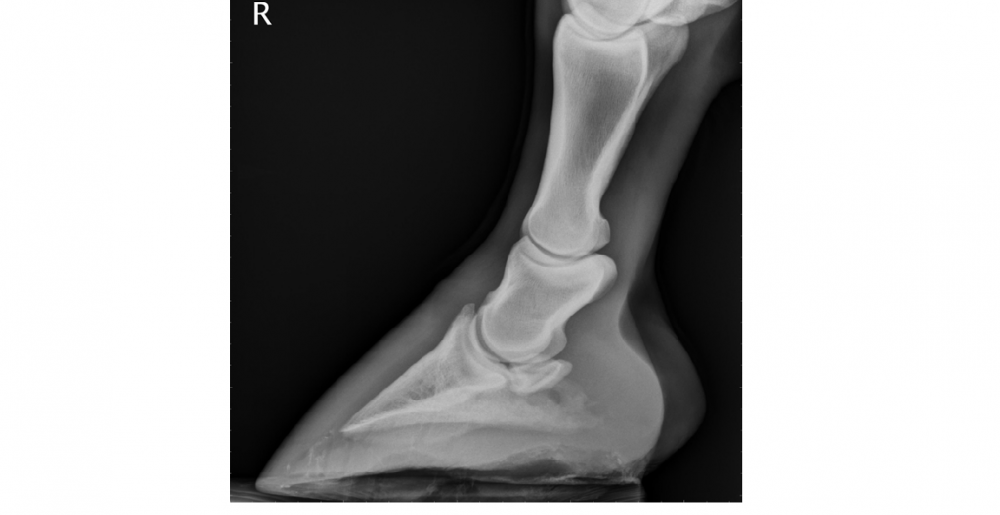
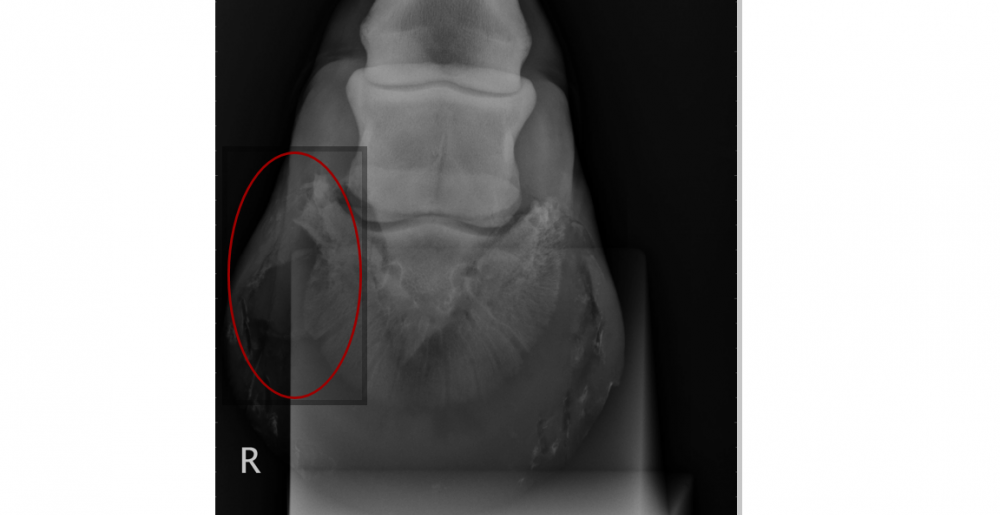
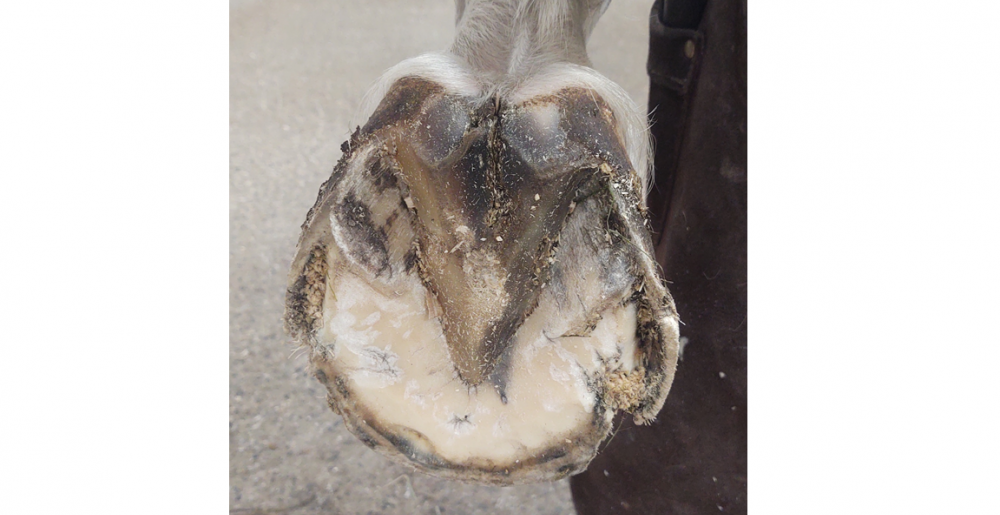
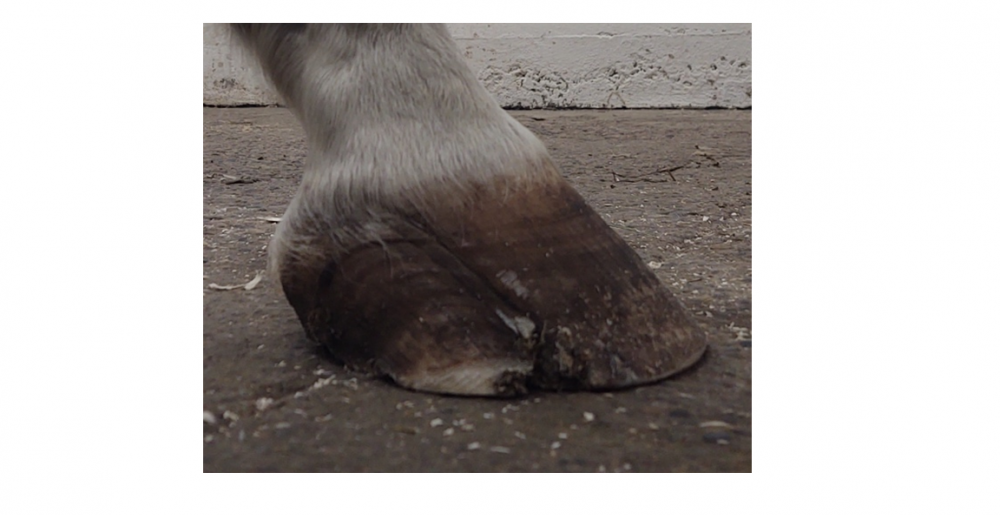
After shoeing
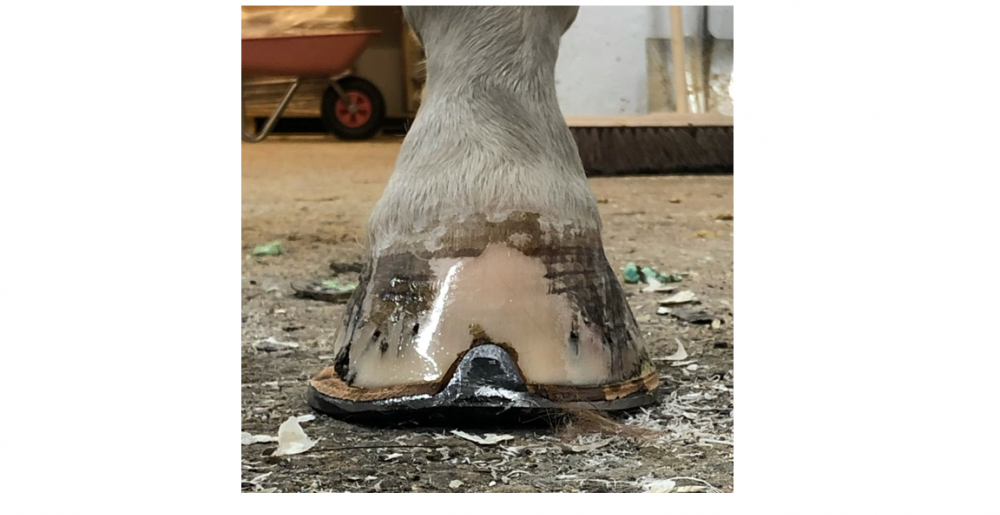
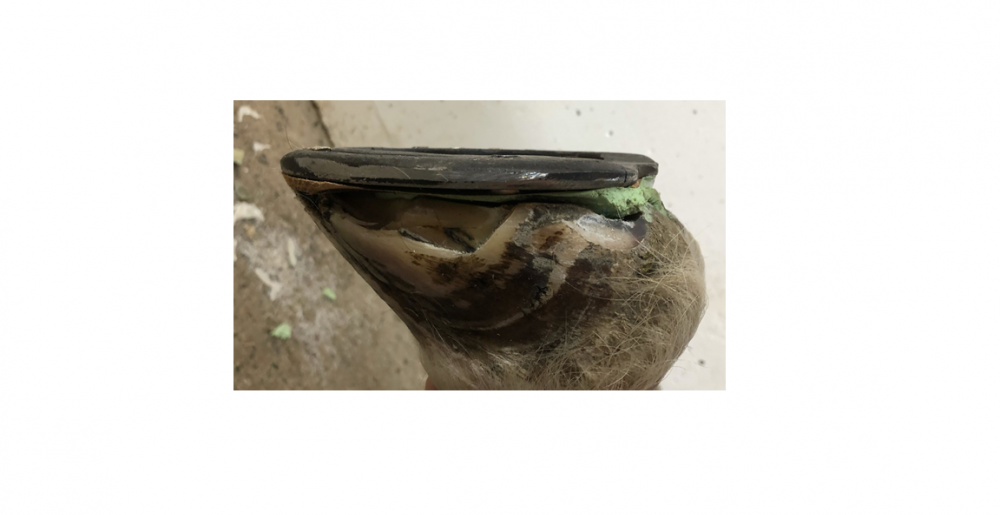
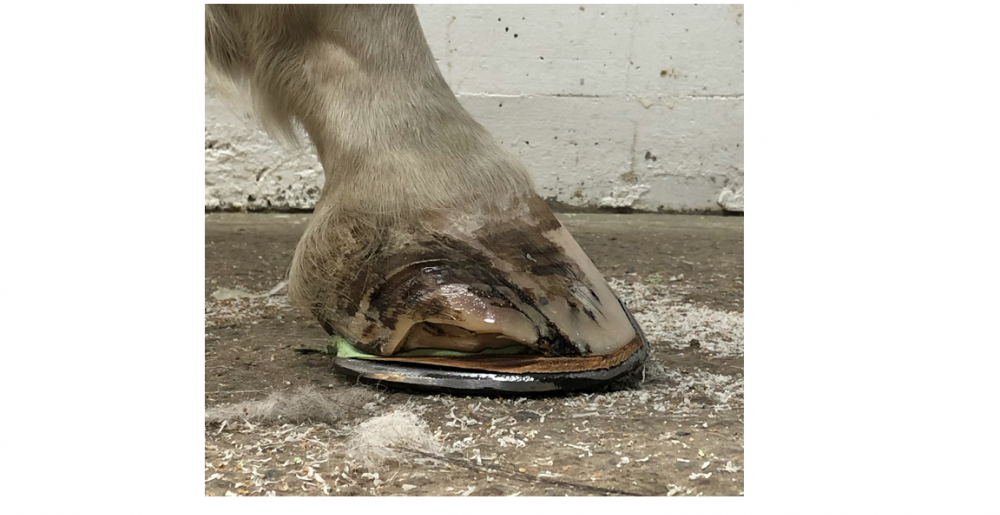
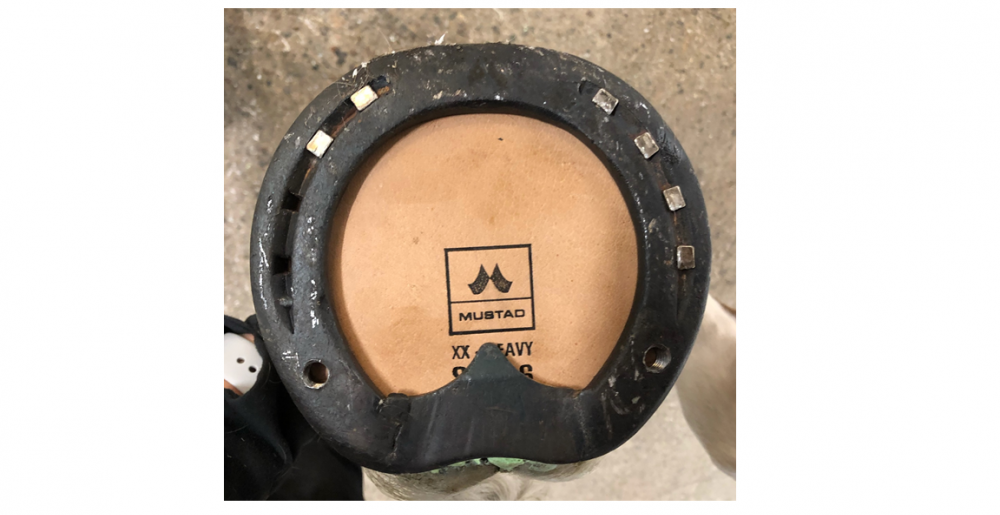
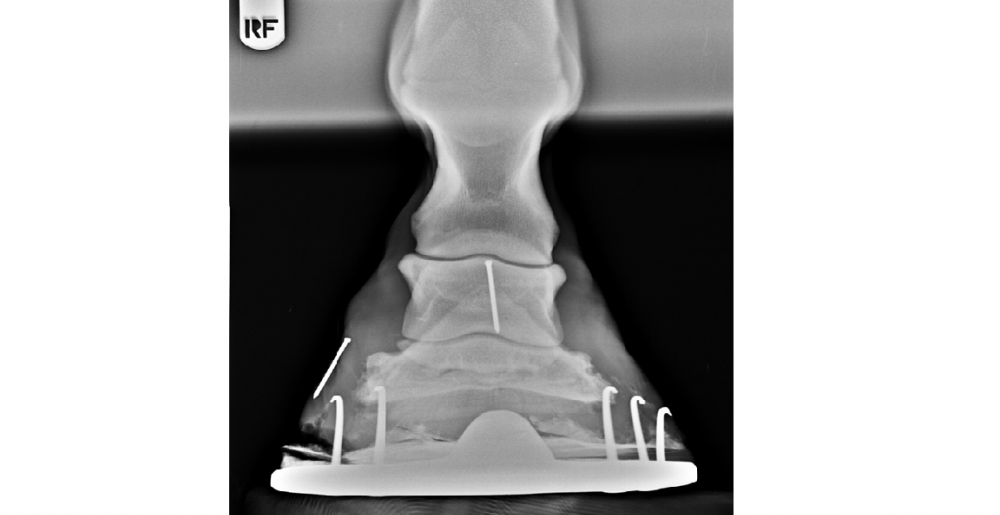
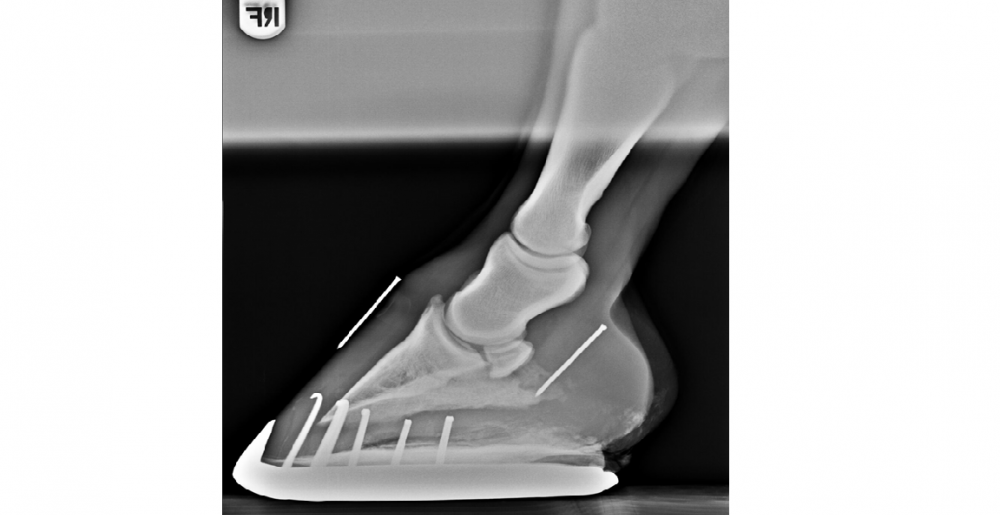
Prognoses:
Horse improved after 1. shoeing and showed no lameness after 2. shoeing’s but long term prognosis is somewhat restricted depending on level of expectation.